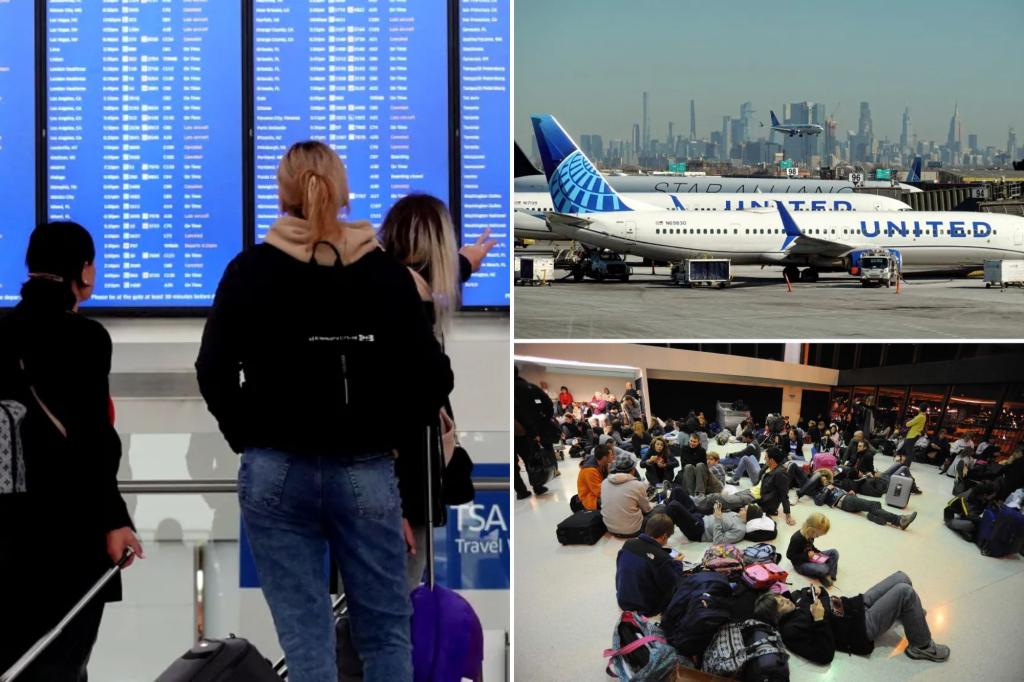The chaos at Newark Liberty International Airport could be solved with a simple fix — even though it would be a different kind of headache for flyers who want to use the New Jersey travel hub, aviation experts said Monday.
Officials need to slash daily flights at the beleaguered airport as soon as possible because the facility isn’t big enough to handle the high volume operating there, ex-Federal Aviation Administration Safety Team Kyle Bailey told The Post.
Still, he warned short-term flying pain won’t be alleviated with a runway closed until mid-June — and as the airport faces a severe shortage of air traffic controllers that has especially hit United Airlines the hardest.
“I don’t see a near-term immediate everything gets better (solution),” Bailey said.
“They simply need to permanently reduce daily flights into the airport, permanently combined with using bigger planes.”
“So there is not a silver bullet,” he added.
Newark Airport, which served nearly 50 million flyers in 2024, has recently faced an avalanche of cancellations and delays that became more pronounced in the past week with the loss of multiple air traffic controllers.
United, which uses the airport as its primary East Coast hub, even announced Friday it was scrapping 35 round-trip flights each day “in order to protect customers.”
On Monday, the airline offered customers the chance to change their flight date or connection city without a tacked-on fee, citing the shortages at air traffic control and lousy weather, according to a message a flyer showed The Post.
At least five air traffic controllers who work the arriving and departing flights at Newark took up to 45 days of “trauma leave” recently, CNN reported Monday.
There were about 153 cancellations and 329 delays at the airport Monday, according to FlightAware data – though some of that could be attributed to rainy weather.
Bailey, a former pilot, noted that while Newark is a “true international airport,” the facility is only the size of a big domestic airport.
“I think when that airport was designed, it wasn’t meant to be handling this volume of flights,” he said.
Newark is around 2,000 acres, while John F. Kennedy International Airport in nearby Queens, New York, is more than double that size.
Another aviation expert, Capt. Ross “Rusty” Aimer, told The Post that Newark wasn’t constructed decades ago around the newer and bigger passenger aircraft.
“The runway design wasn’t that good those days and wasn’t built to accommodate endless commercial jumbo jets flying in and out,” the retired United pilot and now CEO of Aero Consulting Experts explained.
He said using Newark is a “legitimate worry.”
“I would worry as a pilot because you need to increase your awareness 100% and when the system is not working properly it increases the danger,” Aimer said.
“On the other hand, we have great, fantastic air traffic controllers. By the time you get to that level where you are in Newark or Kennedy or LA — you are at the top of your game and the best there is.”
Voicing Bailey’s sentiment, Aimer said a temporary Band-Aid would be to cut down on flights — though he warned that’s a “catch-22.”
“We are not even at summer holiday traffic yet, and we’re already beginning to see these problems,” he said.
“Government agencies need to start hiring and training as fast as possible,” Aimer added. “They need to raise salaries not only to attract talent, but because the job is extremely stressful.”
Bailey insisted that despite the chaos at Newark, safety isn’t an issue.
“It’s more of a major inconvenience issue,” the expert said. “You really can’t depend on traveling from there if you need to be from point A to B.”
Read the full article here

